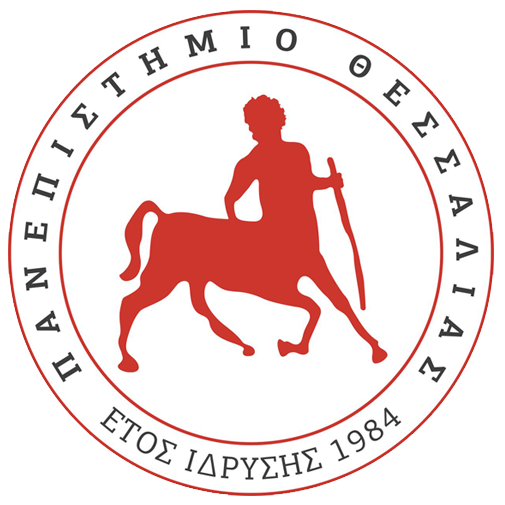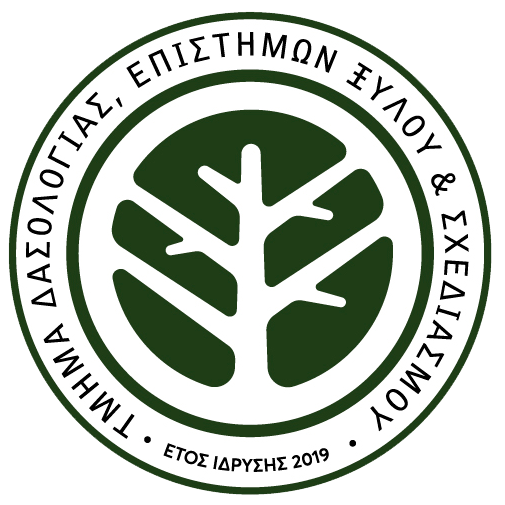 Sokos C, Birtsas P 2014. The last indigenous Black-necked Pheasant population of Europe. G@llinformed 8: 13-22.
Sokos C, Birtsas P 2014. The last indigenous Black-necked Pheasant population of Europe. G@llinformed 8: 13-22.
The last indigenous Black-necked Pheasant population of Europe
Christos Sokos1 & Periklis Birtsas1,2
1Research Division, Hunting Federation of Macedonia and Thrace, 173-175 Ethnikis Antistaseos Str., GR 55134 Thessaloniki, Hellas (Greece) Email: thiramatologos@hotmail.com
2Laboratory of Wildlife, Department of Forestry and Management of Natural Environment, Applied Science Institute of Larissa, Terma Mavromihali str., GR 431 00, Karditsa, Hellas (Greece)
Black-necked pheasant Phasianus colchicus colchicus L. maintains small and isolated populations in Armenia, Georgia, Azerbaijan and Iran. Moreover, there is a last indigenous European population in Nestos Delta in Hellas (Greece) (Sokos & Birtsas 2005, Braasch et al. 2011). The populations of black-necked pheasant number in few hundred individuals; consequently, accordingly with the criteria of IUCN (2001), the subspecies should be classified in category of vulnerable in world level (Sokos and Birtsas 2005).
The establishment of species in Hellas after introduction and release belongs probably to mythology (Argonauts, Colchis, Phasis). Boev (1997) recorded the pheasant bones from archaeological sites, demonstrating the wide distribution of the species in Bulgaria at the past. The oldest finding comes from Dolnoslav (100km northeast of Nestos Delta) and dates from 5530 – 5480 BC. These findings and the fact that black-necked pheasant had wide distribution in Hellas and Bulgaria, strengthens the view that the black-necked is a native species of the Balkans. Nevertheless, Ancient Hellenes gave the name “kolchikos fasianos” as had colonized the Colchian coast establishing there their trading posts at Phasis the 6th-5th centuries BC. Phasis was in marshy delta created by the Rioni river, where black-necked pheasant breeds until today (Sokos and Birtsas 2005). Pheasants were known to ancient Hellene writers, like Aristophanes and Aristotle (Pollard 1977). The geographer Agatharchides of Cnidus (2nd century BC) stated that “great numbers of these birds, known as pheasants, frequent the mouths of the rivers” (Pollard 1977).
During the last centuries ornithologists and hunters provide information about the distribution of subspecies in Hellas. According to them the black-necked pheasant had wide distribution in continental Hellas (Figure 1). Until the 19th century black-necked pheasant populations existed in Attica, Euboea and Akarnania (Handrinos and Akriotis 1997). Pringale (1972) refers that black-necked pheasant was widely distributed and located in the valleys of rivers Pineios of Thessaly, Spercheios and the Gulf of Arta until the 19th century. Tsitsas (1965) adds that after the revolution of 1821, there were pheasants in riparian forests of Agrinio, West Hellas.
At 20th century the distribution of black-necked pheasant was restricted gradually and its hunting was prohibited since 1923. In the first third of the 20th century black-necked pheasant limited to regions of Thrace and Macedonia of North Hellas (Figure 1) and in recent decades, the subspecies breeds only in Nestos Delta, Northeast Hellas (Sokos et al. 2011).
Figure 1. Indigenous black-necked pheasant populations in Hellas at past and present according to ornithologists and hunters of the 19th and 20th centuries. The last population exists in Northeast Hellas, in Nestos Delta (red color).
Black-necked pheasants in Nestos Delta
Nestos Delta is the last refuge of black-necked pheasant in Europe. Paralikidis et al. (1997) found the purity of black-necked pheasants in Nestos Delta as releases didn’t take place in the area and had been prohibited for the protection of subspecies from genetic introgression. Moreover, no male pheasant with white in his neck has been recorded in the area (a dominant trait after hybridization).
Figure 2. Male black-necked pheasant in the Nestos Delta, May 2007 (photo P. Birtsas).
Nestos Delta is of high ecological significance because it hosts a high number of important ecotopes, offering habitat for many wildlife species. In 1956 the region was nominated to become a wildlife refuge and in 1971 it was included in the Ramsar Convention. The area is also protected by the Bern Convention, the EC Directives (Natura 2000 Network), and hunting is prohibited (Dafis et al. 1997). Moreover, two fences were constructed in 1982 by Forest Service in each side of the Nestos River for the protection of natural vegetation and pheasants and usually grazing is not exercised there.
Figure 3. Aspects of black-necked pheasant habitat at Nestos Delta (photo Christos Sokos).
Until 1980s no population estimation are available, old hunters and forest wardens speak for high abundances of black-necked pheasant in the area. At 1985, Papageorgiou (1992) refers that 200-300 black-necked pheasants were found in the Delta. Jerrentrup and Resch (1989 by Handrinos and Akriotis 1997) report that they identified 50 males. Paralikidis et al. (1997) found that the population size was between 700 – 1050 individuals in the period 1990-1994.
The last ten years (2003 – 2012), we monitor the population using the call counts method at May, where 84 points are systematically selected covering the biggest part of Delta. In these years, we have counted 31 – 92 cock territories yearly. According to Burger (1966) this means a total spring population of 100 – 250 individuals.
At 2003, Nestos Delta was evaluated as habitat for pheasant creating and using a Habitat Suitability Index (Sokos et al. 2004). We found that the habitat is degraded or unsuitable in areas where intensive agriculture and grazing are practiced, vegetation is sparse and soil is infertile and there are stables and building installations. These areas occupy 85% of Nestos Delta. In the rest of Delta (15% of the area) the suitability of the habitat is reduced by the lack of openings in woody vegetation and advanced succession stages of herbaceous vegetation (Sokos et al. 2004).
Pheasant predators maintain good populations in Nestos Delta. Such species are wild cat (Felis silvestris), beech marten (Martes foina) and golden jackal (Canis aureus), whereas fox (Vulpes vulpes) has low density. Raptors may also cause serious losses. Moreover, golden jackal, wild boar, corvids and sea gulls may predate on its nests (Paralikidis 2005).
Conservation actions
The existence of the subspecies only in Nestos Delta and its low population abundance, rank the black-necked pheasant as critically endangered on a national level (Handrinos 2009). This unique genetic stock in Nestos Delta is susceptible to numerous threats (e.g. unsuitable habitat, predators, shepherd dogs, intensive agriculture, poaching). A population collapse will have as consequence the extinction of the last indigenous population of black-necked pheasant in Europe, as birds from that population are not reared in captivity.
The Hunting Federation of Macedonia & Thrace has been taking measures to help species by improving habitat in Nestos Delta, employing wildlife warders, monitoring of population and publishing an action plan (Sokos and Birtsas 2005). These efforts should be encouraged and should be combined with re-introduction efforts in areas with suitable habitat and appropriate management.
References
Boev, Z.N. (1997). Wild Galliform and Gruiform Birds (Aves, Galliformes and Gruiformes) in the Archaeological Record of Bulgaria. Intern. Journal of Osteoarchaeology: 7: 430–439
Braasch, T., Peš, T., Michel, S. & Jacken, H. (2011). The subspecies of the common pheasant Phasianus colchicus in the wild and captivity. International Journal of Galliformes Conservation 2: 6–13.
Burger, G.V. (1966). Observations on aggressive behavior of male ring-necked pheasants in Wisconsin. Journal of Wildlife Management 30(1): 57-64.
Dafis, S., Papastergiadou, E., Georghiou, K., Babalonas, D., Georgiadis, T., Papageorgiou M. et al. (1997). The Greek Habitat Project Natura 2000: an overview. Thessaloniki: Greek Biotope/Wetland Centre. [in Hellenic, with English summary].
Handrinos, G. & Akriotis, T., (1997). The birds of Greece. Christopher Helm Ltd., London.
Handrinos, G. 2009. Black-necked Pheasant Phasianus colchicus. In: Legakis, A. and Maragou, P. (eds), The Red Data Book of Threatened Greek Animals, pp. 243. Hellenic Zoological Society, Athens [in Hellenic, with English summary].
Hunter Calendar (1927). Hunting in Hellas before 70 years. Kinitro Publications. Athens. [in Hellenic].
IUCN, (2001). IUCN Red List Categories and Criteria: Version 3.1. IUCN Species Survival Commission. IUCN, Gland, Switzerland and Cambridge, UK ii+30pp..
Papageorgiou, Ν. (1992). The present and the future of black-necked pheasant in Great Forest of Nestos. Pages 169-183. Nestos, the natural environment and its problems. Proceedings of a Conference of GEOTEE, 24-26/4/1992, Kavala, Hellas. [in Hellenic].
Paralikidis, N. (2005). The ecology of the Black-necked pheasant (Phasianus colchicus colchicus) in the Kotza-Orman forest. PhD Thesis, Aristotle University of Thessaloniki [in Hellenic, with English summary].
Paralikidis, N., Karakousis, Y., Papageorgiou, N., & Triantaphyllidis, C. (1997). Genetic structure and divergence between two native populations of the black-necked pheasant (Phasianus colchicus colchicus) from Greece and Bulgaria. Folia Zoologica 46(2): 143-149.
Pollard, J. (1977). Birds in Greek Life and Myth. Thames & Hudson. London.
Pringale, G. (1972). Hunting in Hellas. Analysis of problems and recommendations. UNSF/FAO GRE-20/230.
Sokos, C., Birtsas P., Papaspyropoulos K., Kelesidou S., & Billinis C. (2011). Galliforms releases in North, Central and Island Hellas. Proceedings of 15th Pan-hellenic Forestry Congress. Hellenic Forestry Society, 16–19/10/2011, Karditsa, Hellas. [in Hellenic, with English summary]. http://www.wfdt.teilar.gr/15_th_Panhellenic_Forestry_CONFERENCE/Presentations/Swkos.pdf
Sokos, C.K. & Birtsas, P.K., (2005). Management of Black-necked pheasant in Hellas. Hunting Federation of Macedonia & Thrace – Ministry of Environment, Physical Planning and Public Works. Thessaloniki. [in Hellenic, with English summary].
Sokos, C.K., Platis, P.C., Birtsas, P.K., Stamkopoulos, C.A., & Karakatsanis, K.D., (2004). Pheasant habitat suitability index: its application in Nestos Delta. Proceedings of 1st Pan-Hellenic Environmental Conference: 148 – 158. [in Hellenic]. https://www.agriapanida.gr/test/wp-content/uploads/2004-PHEASANT-HSI.pdf
Tsitsas, S. (1965). The pheasant. Hunting News 406: 997-998. [in Hellenic].





